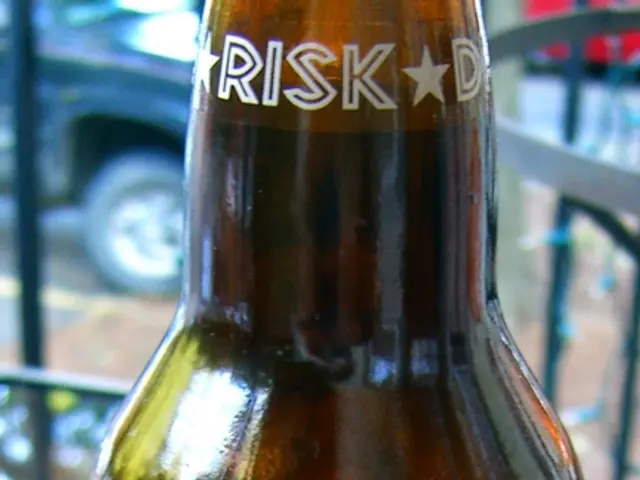"24-hour Time Trial Mishap: My Unwise Decision of Kebab Treat"
It was around 11:30 PM, and I was smack-dab in the middle of a 24-hour ultra-cycling event. Standing in a row with a cacophony of burping gentlemen who had just emptied their pockets at the local pub, we were all lined up for a serving of enigmatic kebab meat at a food truck stationed in a highway layby.
Despite an unquenchable thirst for high-calorie food, our motives for devouring it varied considerably; the pub-goers sought something to sop up their alcohol-soaked evenings, while I yearned for a nourishing meal that would help me hop back on my bicycle and cycle with renewed vigor for the final hour.
Of course, draped head to toe in Spandex, I was subjected to good-natured taunts: "What are you, some kind of superhero?" a fashionably dressed man inquired. "Aren't you supposed to be eating energy bars?" another joked as I shuffled awkwardly on my bike pedals.
Then I placed my order: "A large kebab, a large portion of fries, two bottles of water, and three cans of Coke, please." My pronouncement drew gasps of mixed disbelief and admiration from my fellow patrons. "But I thought cyclists didn't actually eat?" the fashionably dressed man asked, dumbfounded.
"Oh Yeah, We Eat...A Lot!" I retorted.
While it may appear that I had neglected to properly fuel my ride before joining the food line, in theory, I had tried to. A 24-hour TT demands constant nourishment and hydration to keep power and speed high. In addition to having two functioning legs and a beating heart, the most crucial aspect of ultra-long-distance cycling is your stomach—specifically, what you put into it.
My mission to consume as much food as humanly possible in a 24-hour period commenced the day before the event. A yogurt and grain-heavy breakfast set the stage, followed by a rice and bread lunch and half a box of spaghetti for dinner. This is known in cycling circles as carb-loading. It may also be referred to as indulging excessively, but long-distance bicycle rides provide a perfect excuse.
A grocery store excursion with my daughter between lunch and dinner morphed into a little game: a game we dubbed 'Calorie Hunt'. The objective was to find, pound for pound, the most calorific goods in the store. While this may sound monotonous, it proved surprisingly entertaining, especially for my daughter, who enjoyed scrutinizing every chocolate bar we came across.
Barring lard, which packs a whopping 900 calories per 100g, the most calorie-dense and palatable option we found was Chocolate. But not just any chocolate; after sifting through every wrapper, the Bitsa Wispa emerged as the caloric champion, containing 550 calories per 100g. I purchased three bags and stocked them in the food pouch attached to the front of my bike. I also threw in some macadamia nuts and two bags of Haribo, giving me a Trail Mix deluxe weighing approximately 5,000 calories—enough to see me through breakfast.
Get The Leadout Newsletter
Stay updated with the latest race content, interviews, features, reviews, and expert buying guides delivered right to your inbox!
With breakfast squared away, I entered the fray.
0-6 hours
Approximately six hours into the ride, I commenced my search for sustenance once more. I had emergency provisions in the form of my go-to energy gels, but the very thought of consuming any more sugar left me heaving with revulsion. Lucky for me, the course consisted of a loop that took in a succession of small towns and villages, and on the outskirts of small towns and villages, one can often chance upon the long-distance cyclist's best friend—petrol stations. And I wasn't about to pass up the chance to take advantage of their affordable junk food offerings.
6-12 hours
A meal deal presents a significant burst of carbohydrates in a convenient package. I purchased two and a sausage roll for good measure. Meal deals, for those unacquainted with their delights, encompass a main sandwich, a side snack, and a drink. If I'm feeling particularly indulgent—as I was on this occasion—I will opt for the triple cheese sandwich on white bread, a bag of Monster Munch, and a bottle of Cherry Coke. I consumed one on the petrol station forecourt, and I stashed the second meal deal in various nooks and crannies on my person and bicycle. I consumed the sausage roll on the move—proving less than ideal for speedy consumption at 20 miles per hour—but I spent the following two weeks expelling chunks of puff pastry.
Let's evaluate the energy content of that little repast: 2 x triple cheese sandwiches add up to 1,400 calories, 2 x Monster Munch grab bags total 900 calories, 2 x Cherry Cokes supply 600 calories, and a sausage roll contributes 600 calories. In all, we're looking at 3,500 calories. Add the energy gel stashes, and I believe I had everything I needed for the late afternoon shift.
12-18 hours
Approximately 4,000 calories had passed through my system and, by now, I had completed 250 miles on the saddle. They were miles that moved quickly; the route was gently undulating and didn't trouble the fast-twitch fibers, so my legs were still functioning reasonably well. My backside, on the other hand, had started to complain, but my stomach soon chimed in with hunger pangs wondering what was in store for supper.
Seriously? More? Yes, more. I was now deep into the night shift, and the Cotswolds was drawing its curtain for the day. I had no other choice than to seek refuge in the final stronghold of the endless hunger.
And so it was that I found myself in line with Ben Sherman, who jeered me for my attire, and his friend who asked why I wasn't eating energy bars before I placed my order for a large kebab, fries, and three cans of Coke. If I had the energy and the inclination, I would have explained that an energy bar wouldn't provide the sustained energy needed to fuel a further six hours of cycling, while what I had just ordered—large kebab (2,000 calories), fries (900 calories), and three cans of Coke (450 calories)—would.
18-24 hours
Reflecting back, the kebab may not have been the best decision. Despite my need for salt, I didn't want a pool of seawater in my dinner. My gut started rebelling—vigorously protesting my attempt to stuff it with something new and unfamiliar. After finding a suitable spot on the side of a country road, I laid down to rest and spent quite a while groaning into the dewy grass.
There's a good reason why sports nutrition and supplements are so popular among athletes. They provide a rapid energy release that can be easily absorbed by the gut, which is crucial for maintaining performance during long-distance rides. No matter what you eat during long-distance rides for fuel, it's essential to factor it into your training to prevent your stomach from being taken by surprise by a sudden onslaught of calories.
Despite my minor setback, I managed a commendable 335 miles and, more importantly, learned another valuable lesson about the intricacies of long-distance cycling.
In the midst of a 24-hour ultra-cycling event, a keen interest in health-and-wellness and science emerged regarding nutrition for a healthy-diet. Despite pre-ridden carb-loading, the cyclist found his stomach demanding sustenance, particularly during the 12-18 hour mark. To cater to his energy requirements, he opted for calorie-rich meals, such as meal deals with triple cheese sandwiches, Monster Munch, and Cherry Coke, totaling around 3,500 calories. While convenient, such foods may not have been the best decision for his stomach during the grueling race. In the world of sports and long-distance cycling, proper understanding of nutrition and hydration plays a pivotal role in maintaining peak performance.






